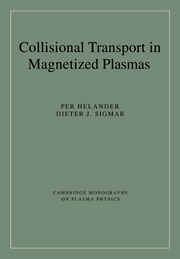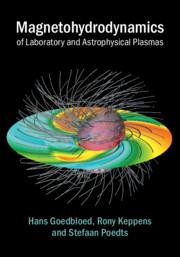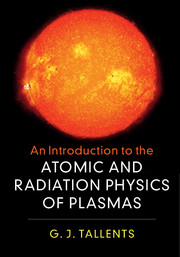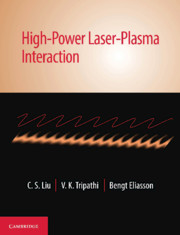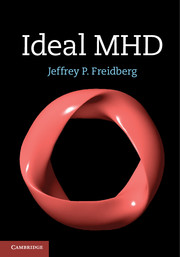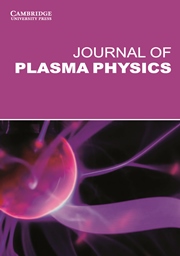Collisional Transport in Magnetized Plasmas
Collisional transport theory is of central importance to modern plasma physics. This book provides a self-contained treatment of the subject, starting from elementary concepts and developing the theory through to the research frontier. Basic tools of kinetic plasma theory, such as the drift kinetic equation and the Coulomb collision operator, are derived, and are then used to calculate classical and neoclassical transport occurring in high-temperature plasmas. Important phenomena such as neo-classical diffusion, bootstrap current, and plasma rotation are carefully explained. Students, theoreticians and experimentalists in both fusion and space plasma physics will benefit from this book, which emerged from a graduate student level course taught at MIT.
- Comprehensive and systematic introduction to plasma collisional transport theory
- Includes detailed mathematical development of widely used transport coefficients and transport equations, for the interested theorist as well as the experimental fusion plasma physicist
- Includes advances in neoclassical theory, and a discussion of experimental verifications of neoclassical theory in existing tokamak experiments
Reviews & endorsements
'… invaluable for space-plasma and astrophysical theorists who have a background knowledge of plasma theory and who wish to understand an important strand of laboratory theory that will have vital implications in future for their fields.' Eric Priest, The Observatory
'It is a very welcome addition, indeed asset, to the subject.' Journal of Plasma Physics
'It seems that the authors know how to build a bridge between a manual and a research book. This monograph will be useful to advanced graduate students and scientists that are working in plasma physics.' Zentralblatt MATH
Product details
October 2005Paperback
9780521020985
312 pages
245 × 168 × 16 mm
0.503kg
30 b/w illus.
Available
Table of Contents
- 1. Introduction
- 2. Kinetic and fluid descriptions of a plasma
- 3. The collision operator
- 4. Plasma fluid equations
- 5. Transport of a cylindrical plasma
- 6. Particle motion
- 7. Toroidal plasma
- 8. Transport in toroidal plasmas
- 9. Transport in the Pfirsch–Schlüter regime
- 10. Transport in the plateau regime
- 11. Transport in the banana regime
- 12. The moment approach to neoclassical theory
- 13. Advanced topics
- 14. Experimental evidence for neoclassical transport.

